Tesla Officially Opens Pre-Orders for the China-Made Model 3 Standard Range Plus Upgrade
Tesla officially opened pre-orders for the China-made Model 3 Standard Range Plus Upgrade during lunchtime today. It comes with the standard Autopilot feature and is priced at RMB 355,800, with expected delivery beginning in Q1 2020.
Before noon today, the Chinese-made Model 3 was priced at RMB 328,000, with the optional Autopilot feature available for RMB 27,800, resulting in a total cost of RMB 355,800, equivalent to the price of the newly announced variant.
Many fans of the China-made Model 3 may have been baffled by this move. Although the total price of the vehicle remains unchanged considering the optional Autopilot feature, the starting price plays a significant role in the sales of a car, especially for the mass market. A lower starting price means the car can attract a broader consumer base.
Furthermore, the China-made Model 3 holds a substantial importance for Tesla, considering the rapid pace of its expansion with the Shanghai plant and the fact that China is already the largest automobile market worldwide. However, the decision to increase the price tag of the new variant left many people perplexed.
Also, with a current price of RMB 355,800 for the standard version of the Model 3 with Autopilot feature, the difference between domestic and imported variants of the same vehicle seems trivial, with only RMB 8,100 or so separating them. This is a perplexing gap, especially given that the imported Tesla Model 3 Standard Range Plus Upgrade, which came with the standard Autopilot, was priced at RMB 363,900 (already removed from the website).
To top it off, the NEDC estimated range of the China-made Model 3 Standard Range Plus Upgrade is 460 km. Compared with the most direct competitor, the Nio ES6, which has a NEDC range of 420 km, a standard battery of 70 kWh, and a post-subsidy price of RMB 338,000, with the optional NioPilot priced at RMB 39,000, the China-made Model 3 does not seem to have much of an advantage despite the difference in body size and interior.If compared with other mainstream luxury midsize cars, except for the new BMW 3 series, currently, there are large terminal discounts for most luxury midsize cars, with a landing price of less than 300K RMB. Therefore, it is indeed difficult for Tesla’s domestically produced Model 3 to attract traditional luxury car users who prefer fuel vehicles.
Some may think that Tesla Autopilot has strong competitiveness.
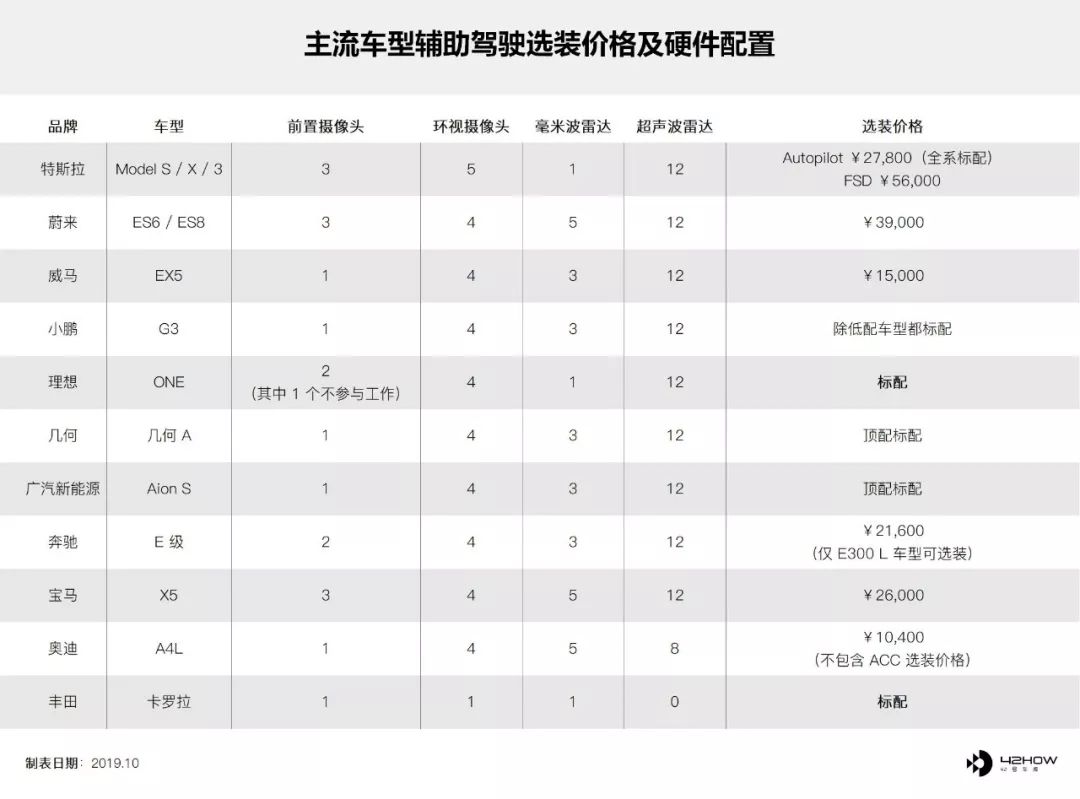
However, as shown in the above table, it can be seen that many car models on the market have also been equipped with L2 level assisted driving. Although they are not as powerful as Autopilot, they perform well on closed roads with good driving conditions, such as highways and ring roads. Moreover, for many friends living in non-first or second-tier cities, there are not many opportunities to use assisted driving.
After Tesla’s official announcement, we also conducted a survey to see what people thought of this price increase.
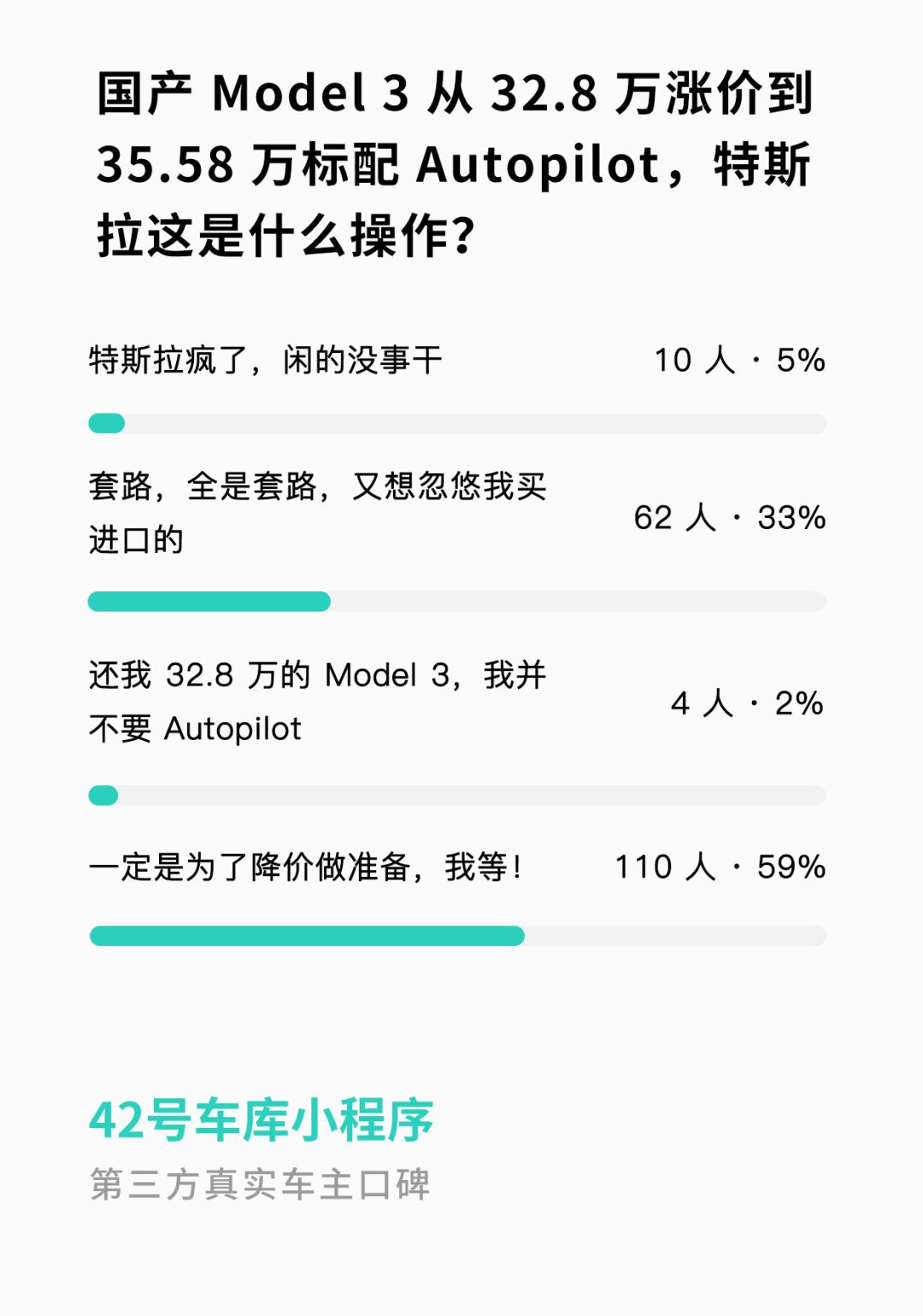
Obviously, nearly 60% of the participants believed that this was in preparation for a price reduction.
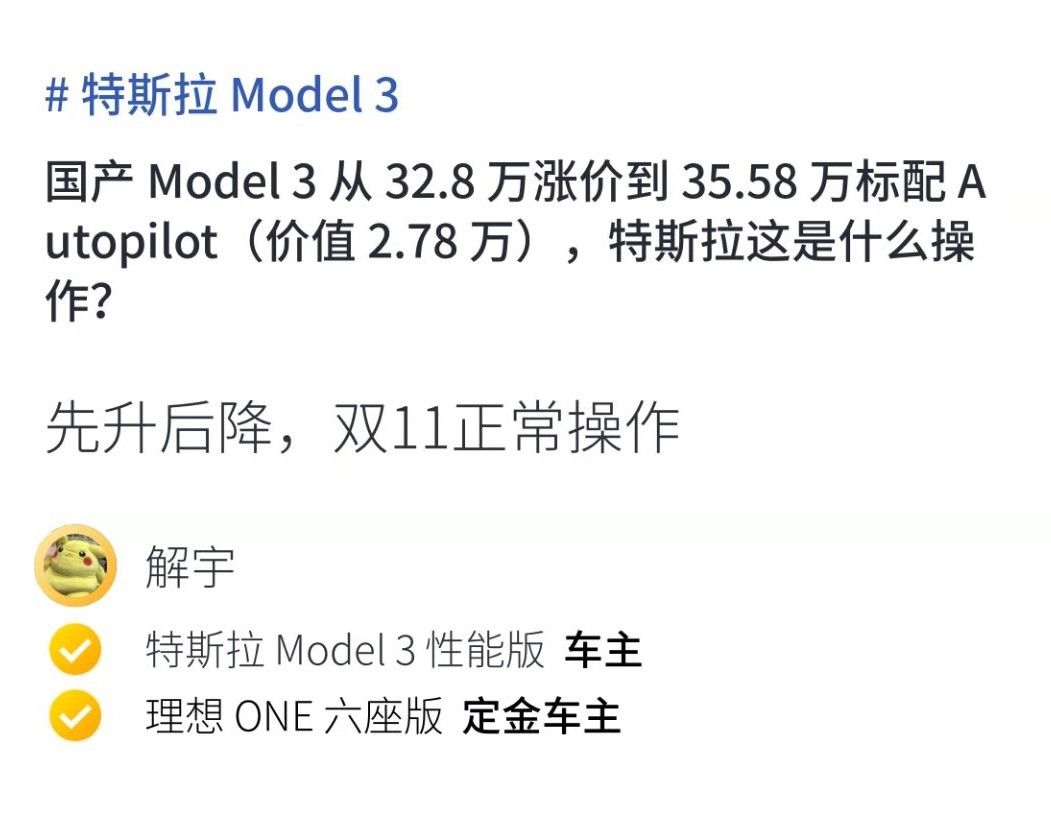
As shown in the comment above, it seems like Double 11 is coming soon….
For now, this is the only reasonable explanation, as Tesla’s sales strategy has always been unpredictable.
Moreover, from the perspective of Tesla’s official WeChat public account, the company has indeed left unlimited imagination space for the general public.
However, for friends who are interested in buying domestically produced Model 3, when is the best time to buy?
Domestically produced Model 3’s price reduction may not come so soon.
Why do we say so?
Let’s review Tesla’s price adjustments or sales strategy changes this year.
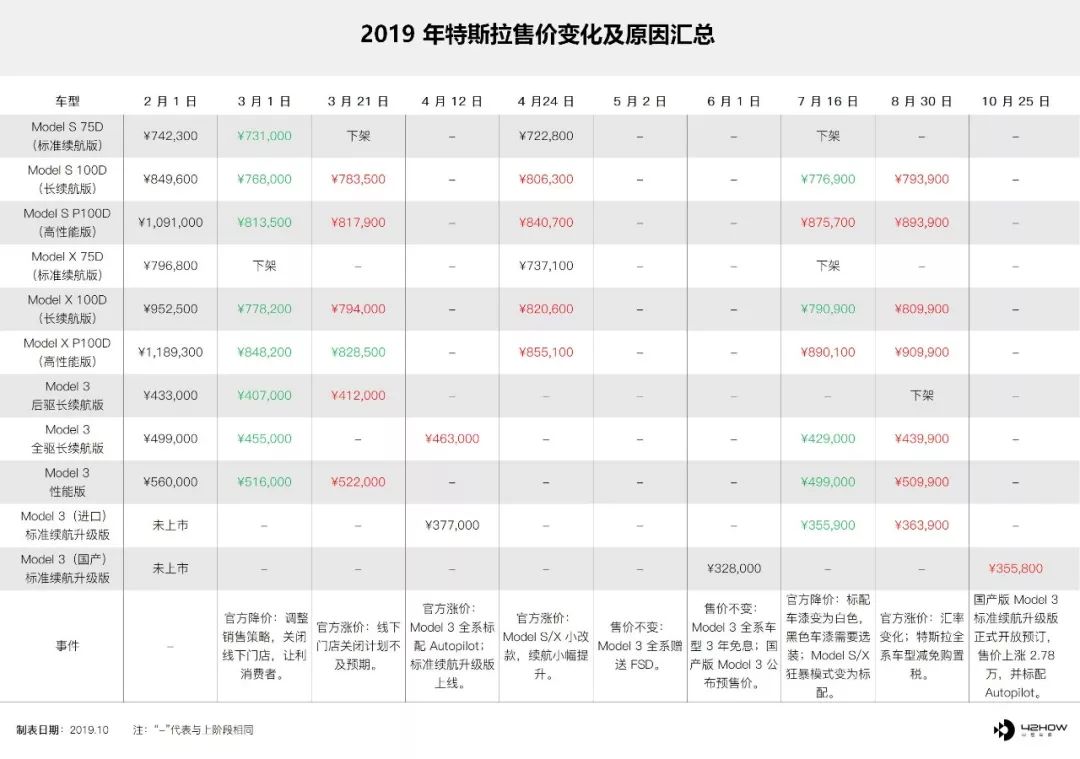 In just over half a year, Tesla has had 9 price or sales strategy changes. However, if you take a closer look, Tesla isn’t just lowering prices all the time. Out of the 9 changes, there were 2 official price reductions, 5 price increases, and 2 hidden price reductions. It is indeed a large fluctuation…
In just over half a year, Tesla has had 9 price or sales strategy changes. However, if you take a closer look, Tesla isn’t just lowering prices all the time. Out of the 9 changes, there were 2 official price reductions, 5 price increases, and 2 hidden price reductions. It is indeed a large fluctuation…
Let’s take the Model 3 Long Range All-Wheel Drive as an example. Actually, from March 1st to now, the official guidance price has only dropped by 15,000 RMB.
Next, let’s take a look at the number of official registrations in China for the Model 3 since the start of sales this year.
Obviously, if you look at it by quarter, the sales volume in the last month of each quarter is significantly higher than the first two months. And promotions such as the free FSD for Model 3 in May, the three-year interest-free policy for Model 3 in June, and the exemption from the purchase tax for Model 3 in September all had a huge impact on sales.
If we look at it this way, December might be a good time to buy a domestic Model 3?
However, whether Tesla will have promotions or not also depends on inventory. When there is a lot of inventory (short delivery cycle), Tesla will try to promote sales to digest the inventory. When the inventory is low, for example, on November 17th in the United States, there was a slight price increase (the price of the Model 3 Standard Range Plus increased by $500, and the price of the Performance version increased by $1000), and the delivery cycle also increased from the original 2 weeks to 6-10 weeks. In short, it’s a supply and demand problem.
Returning to the domestic Model 3, after all, the Shanghai factory has just started production, and it takes time to ramp up production capacity. At present, the current volume of orders is sufficient to digest the production capacity. I think that even if there is a price reduction in the short term, the magnitude will not be large. Only after production capacity has fully ramped up, will the domestic Model 3 perhaps truly start a price reduction mode.
Considering the above points, if you are not in a hurry, the end of the first quarter next year may be a good time to buy a domestic Model 3.
As for FSD (Full Self-Driving Capability), you can wait.
I believe many friends who want to buy a Tesla not only pay attention to the price but also want to know if FSD is worth selecting.Actually, many people used to be undecided about whether or not to choose Autopilot. But as of today, Tesla’s entire lineup comes standard with Autopilot, so this is no longer an issue.
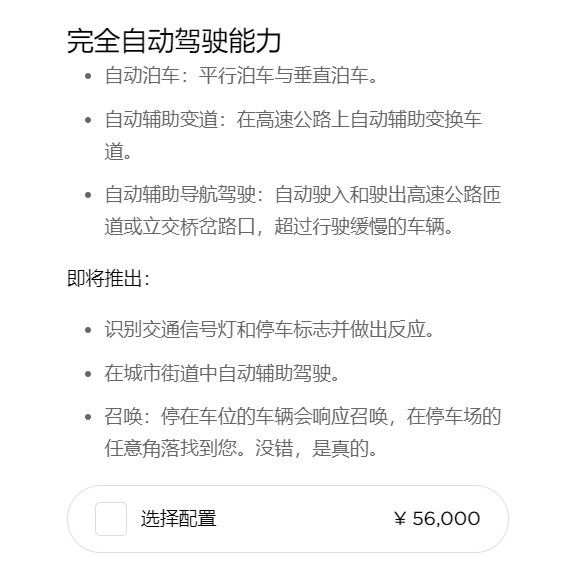
Although FSD has automated lane changing, summon, and automatic navigation assistance functions in addition to Autopilot, based on current actual experience, the only feature that is more useful is automated lane changing. To put it simply, with the basic Autopilot on, if you want to change lanes, you need to first exit Autopilot, complete the lane change manually, and then manually re-enable Autopilot. This is not as good an experience as FSD’s automatic lane changing by activating the turn signal.
However, it is not worth paying 56,000 RMB just for this one function. As for other functions, either they are not practical enough or are still in development… So, wait until fully automated driving is truly realized, and it will still be possible to choose later.
Of course, some friends who are familiar with Tesla will say that FSD will continue to increase in price with every major feature update, but for the future, no one can say for sure. Just like friends who purchased the Model S or X with FSD added on several years ago, they have not really enjoyed fully automated driving yet. And spending 56,000 RMB in advance is a real expense, so personally, I do not highly recommend choosing FSD.
Finally, many people say “buy early, enjoy early, wait for discounts when you’re late.” This sentence is not a problem at all and applies to any model. Although I also believe that prices may be even better by the end of the first quarter of next year, when that time comes, everyone may be hoping for the next price cut or even waiting for the next Tesla model from the Model 3 to the Model Y.
What do you think?
This article is a translation by ChatGPT of a Chinese report from 42HOW. If you have any questions about it, please email bd@42how.com.
